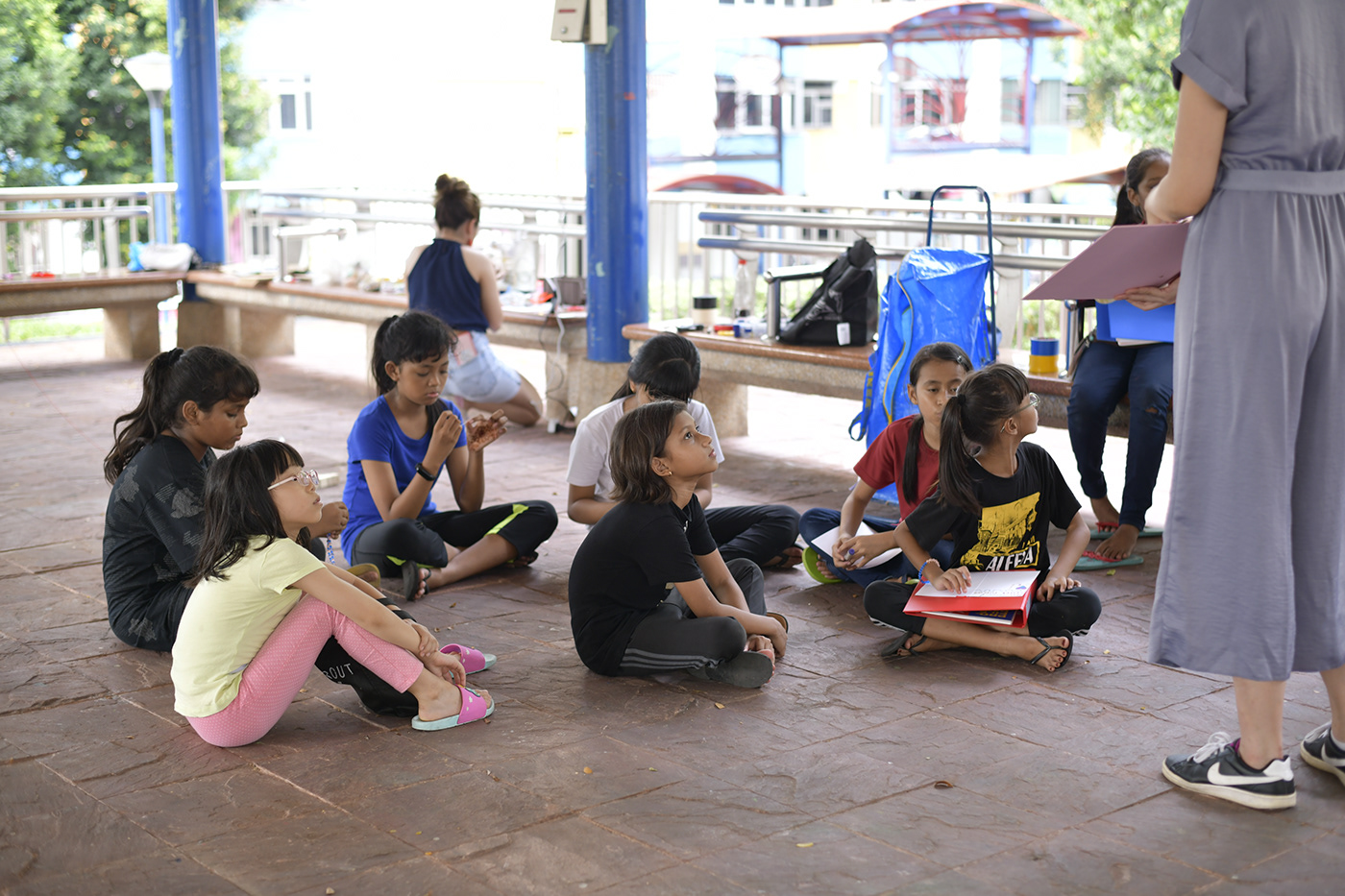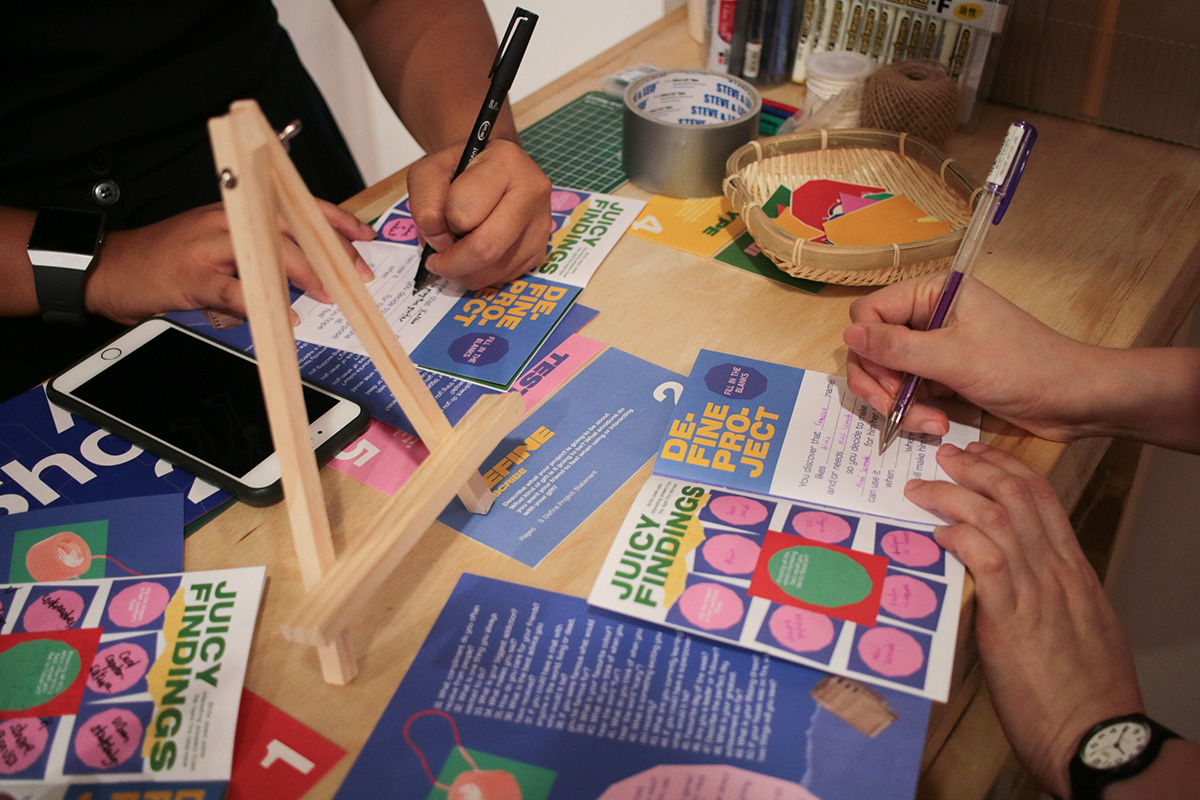School Project | ADM Year 4 Final Year Project | Aug 2018–May 2019
Designing for Social Impact: Wonder Deck
Project: Final Year Project (FYP) for BFA Visual Communication
Research Topic: Using design to address educational inequality in lower-income primary school students (ages 7–12)
Project Timeline:
• Aug–Dec 2018: Secondary research and concept development
• Jan–May 2019: Primary research, concept and design development
• Apr 2019: Conducted 4 workshops testing my design thinking curriculum and activity journal
• 10–19 May 2019: FYP Exhibition
What is Wonder Deck?
Wonder Deck is a design thinking workshop series: a community- and volunteer-based alternative to expensive school holiday programmes for primary school children from low-income families. Wonder Deck aims to expand the potential of the children's organic creativity with a framework for problem solving: the design thinking process. The empathy stage teaches them to design with understanding; and the prototyping and testing stages encourage them to think critically through the making process. For this introductory workshop, the children got a taste of design thinking through designing a gift for a friend.

Explaining the activities for the workshop

The activity journal I designed, which contains empathise, define, ideate, prototype, test, exhibit, and feedback sections.
Project Background
Income inequality manifests itself in vastly different life experiences and opportunities. It results in educational inequality, where the amount of extra enrichment opportunities one has access to is dependent on the financial capability of one’s family.
Since mid-2017, a group of children who live in public rental flats have been doing creative projects at weekly “Make n Play” sessions organised by Beyond Social Services. Gathering at the void deck, they draw, paint, cut, tape and create anything and everything from cardboard, duct tape, paper, string, and other recyclable materials. I started volunteering for this programme in February 2019 to get deeper insight into their lives, and the idea for my FYP developed from there.
Aims
To create a free and sustainable source of learning opportunities for the children and:
1. Empower them with the ability to share their ideas with the world
2. Show them that learning goes beyond academia and cultivate a passion for learning
3. Equip them with 21st century competencies—creativity, confidence, critical thinking, communication, self-directed independence
Design Deliverables
1. Workshop Curriculum
2. Design Thinking Activity Journal
3. Workshop Promotional Flyer
4. Children's Project Showcase Posters
5. Project Description Cards
6. Workshop Completion Certificates
7. Condensed Design Thinking Activity Journal
8. Grad Show Booth Design
Design Aesthetic
I went for a bold graphic aesthetic with “hand-cut” geometric shapes and primary colours to reflect the freedom of creativity that I wanted to encourage. The textures and making tools add visual interest and are a nod to the making process.

I used mostly primary colours to make it bright and attractive to the children.
Design Thinking Activity Journal
The activity journal’s content was referenced from multiple sources: IDEO, d.school, LAUNCH cycle, and David Lee Ed Tech. I made it more fun for the children by gamifying the learning process: throwing balls into question boxes for the empathy section; rapid fire questions to get to know their friend; playing ideas bingo etc.

Promotional Flyer


Children's Project Showcase Posters




Project Description Cards




Certificates of Completion




Flatlay to show how the collaterals come together to form an overall visual identity
Design Thinking Workshop
I conducted 4 trial workshops in April and May to test out my curriculum and improve based on the response. Initially, the plan was to dedicate one weekly workshop to each stage of the design thinking process.
1. Explore their interests through painting (2 hours)
In this session, I wanted the children to think about their interests through expressive paintings, and paint anything that came to mind.





2. Teaching Empathy (1 hour)
Teaching the first stage of design thinking, empathy, through asking questions to get to know their friends. I tried to make it fun by building this hoop-shooting game, where the children would have to score and answer the question tagged to it.



After these two trial workshops, I realised that it was quite hard to contextualise design thinking for the children when the sessions were weeks apart. I decided to change the workshop structure to a design thinking sprint instead, where I would cover the whole process over two sessions.
The brief was to design a gift for a friend.
3. Design Thinking Sprint Part 1: Empathise, Define, Ideate (2 hours)





4. Design Thinking Sprint Part 2 (1 May): Prototype, Test, Exhibit (2.5 hours)


Discussing her ideas for her gifts with a volunteer







Customising their activity journal files with stickers

A participant proudly showing her finished product: a cat bracelet holder!

Group photo with Elda (Make N Play lead teacher), volunteers, and the children after their project showcase
Watch this video for behind the scenes footage and more process documentation
Conducting these workshops would not have been possible without the help of my friends Gee Ping, Abigail, Junie, and the other Make N Play volunteers, who so kindly helped to facilitate the workshops. As well as my dad for gathering cardboard and miscellaneous materials; and my mom for sending me and all the materials to the venue every week. <3
Grad Show Exhibition
We designed an exhibition booth to showcase our FYPs. My goals were to:
• communicate to visitors what my project was about
• showcase the children’s works
• share the workshop process through a process video
• provide visitors with the opportunity to try the same design thinking project for themselves (their booklets and gifts would then be used to inspire the children to continue design thinking)



Visitors could display their gifts and completed booklets on the wooden trolley. I encouraged them to leave their gifts and books behind so that I could show them to the kids after the exhibition.

Visitors trying out a condensed version of the design thinking project

A condensed A6 version of the design thinking activity book that i designed for visitors to use








Displaying the children's activity journals
———————————————————————————————
Design Process
Style Exploration
Visual identity explorations before settling on the visual language in the final book. One of my initial solution ideas was to design an educational space in the void deck, with the name "Outer Space". I chose that name because I wanted the void deck to be a place where all judgement was suspended; creativity followed no rules; and the children could be free to be whatever they wanted to be.

Character Sketches




Video Projections in space
To create a whimsical and playful atmosphere for Outer Space, I wanted to project these "rainbow portals" on the walls and floor. I first took videos the patterns these reflective papers made, and then edited them in After Effects for a wavy, swirling effect.



Thank you for viewing!
This project is still in progress, so do come back for updates. Remember to like and subscribe :D






